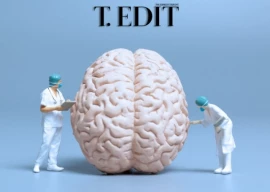
Researchers at Baylor College of Medicine and Texas Children’s Hospital have discovered a neural activity pattern that could serve as a biomarker to predict and monitor obsessive-compulsive disorder (OCD) in patients undergoing deep brain stimulation (DBS). The study, led by Drs. Sameer Sheth, Wayne Goodman, Nicole Provenza, Sandy Reddy, and Anthony Allam, was published in Nature Medicine.
“Recent advances in surgical neuromodulation have enabled long-term continuous monitoring of brain activity in OCD patients during their everyday lives,” said Dr. Nicole Provenza. “We used this novel opportunity to identify key neural signatures that can act as predictors of clinical state in twelve individuals with treatment-resistant OCD who were receiving DBS therapy.”
OCD affects 2-3% of the global population, with around two million people suffering from it in the US alone. In severe cases, conventional treatments like psychotherapy and medications fail for 20-40% of individuals. DBS has emerged as an effective treatment for such cases, with roughly two-thirds of patients showing significant improvement.
DBS devices regulate brain activity similarly to how pacemakers regulate heart activity. Electrical impulses from a generator implanted in the chest travel through wires to target regions in the brain, helping to restore normal function. This FDA-approved procedure is also used to treat movement disorders like Parkinson’s disease.
“We have seen remarkable progress in DBS research, a technology that has been used for decades to treat movement disorders,” said Dr. John Ngai, Director of the Brain Research Through Advancing Innovative Neurotechnologies® Initiative at the National Institutes of Health.
The study aimed to find a reliable neural biomarker to guide DBS management and monitor changes in OCD patients' symptoms remotely. Dr. Sheth noted that defining the correct dose for psychiatric disorders like OCD is more challenging than for movement disorders due to the delayed symptom improvement.
The team focused on the pathological avoidance behavior characteristic of OCD. They examined how low-frequency brain oscillations in the theta to alpha range were altered in individuals with severe, treatment-resistant OCD. Using modern DBS devices, they could record brain activity continuously in the participants' daily lives.
Recordings started upon DBS system implantation, measuring neural activity patterns before stimulation began. They found that 9 Hz ventral striatum neural activity exhibited a circadian rhythm. “Before DBS, we saw an extremely predictable and periodic neural activity pattern in all participants,” said Dr. Goodman. “However, after DBS activation, we saw a breakdown in this predictable pattern as individuals improved symptomatically.”
Dr. Sheth added, “We have identified a neurophysiological biomarker that can serve as a reliable indicator of improvements in mood and behaviors in OCD patients after DBS treatment.”
The researchers believe these findings could transform patient monitoring during DBS therapy. Dr. Provenza concluded, “Incorporating this information into a clinician-facing dashboard could help guide therapy delivery, making DBS programming for OCD more accessible.”
The study was partially funded by the Brain Research Through Advancing Innovative Neurotechnologies® Initiative, among other institutions.
The report has been published in Eurka Alert website.






















COMMENTS
Comments are moderated and generally will be posted if they are on-topic and not abusive.
For more information, please see our Comments FAQ